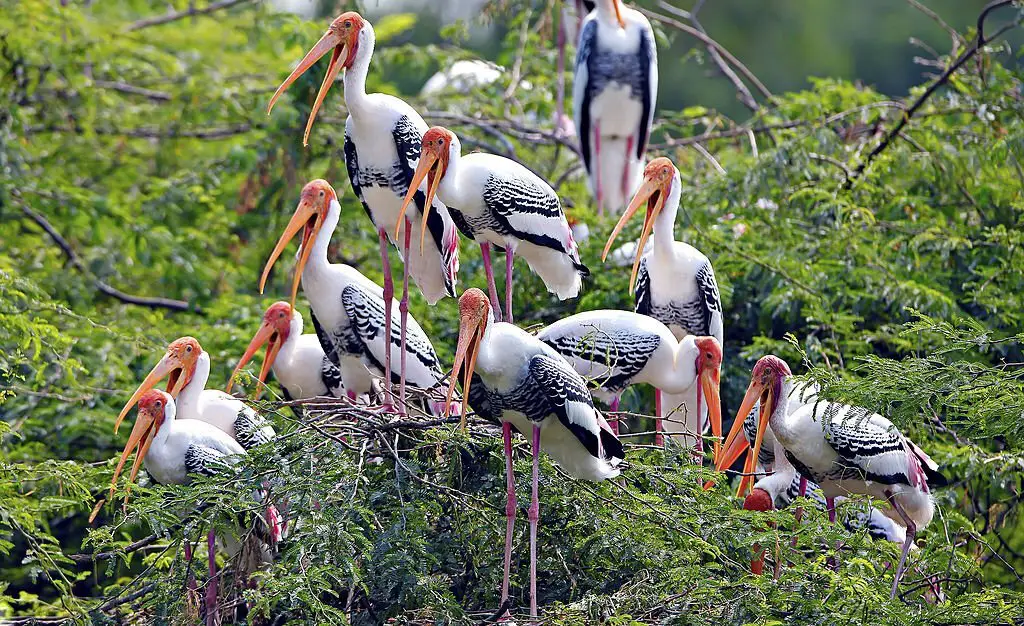
by Ja Darrion | Apr 9, 2025 | Travel Tips
India, the land of majestic landscapes and diverse wildlife, is home to the iconic Bengal tiger. Known for its strength, beauty, and grace, the Bengal tiger is one of the most revered animals in the world. If you’ve ever dreamed of book tiger safari seeing this magnificent creature in its natural habitat, booking a tiger safari in India is the adventure of a lifetime. With numerous tiger reserves spread across the country, booking a tiger safari not only promises an exciting wildlife encounter but also contributes to the conservation of these endangered creatures. In this article, we will guide you on how to book a tiger safari, what to expect, and why it should be on your travel bucket list.
Why You Should Book a Tiger Safari in India
best tiger safari in india India is home to the largest population of Bengal tigers, making it the prime destination for tiger enthusiasts. Booking a tiger safari in India offers a unique opportunity to explore dense forests, vast grasslands, and riverbanks while searching for tigers. Here are a few reasons why you should consider booking a tiger safari:
1. Spotting Tigers in the Wild
One of the most thrilling aspects of booking a tiger safari is the chance to spot a tiger in the wild. While tigers are elusive and their sighting is not guaranteed, the excitement of tracking them through India’s tiger reserves is an unparalleled experience. Whether it’s a tiger lounging by a waterhole or a majestic male tiger crossing a forest trail, the thrill of encountering one of these magnificent creatures is something you’ll never forget.
2. Conservation and Wildlife Protection
India’s tiger reserves are not just tourist attractions; they are critical to the protection and conservation of Bengal tigers. By booking a tiger safari, you contribute to anti-poaching efforts, habitat restoration, and wildlife protection programs. The revenue generated from safari bookings helps fund these initiatives, ensuring that tigers and other endangered species continue to thrive in their natural habitats.
3. Diverse Flora and Fauna
A tiger safari isn’t just about spotting tigers. India’s national parks and tiger reserves are home to an abundance of other wildlife. Depending on the park you choose, you may also spot leopards, sloth bears, wild boars, and a variety of deer species. The parks are also a birdwatcher’s paradise, with numerous species of birds inhabiting these areas. The diverse flora and fauna make every safari an exciting and educational experience.
4. Scenic Beauty
India’s tiger reserves are located in some of the country’s most picturesque landscapes, from the grasslands of Ranthambore to the dense forests of Jim Corbett. Each reserve offers a different type of terrain, adding to the overall beauty of the safari experience. Whether you’re driving through dense woods or watching the sunset over a river, the scenic beauty of the parks enhances the wildlife experience.
How to Book a Tiger Safari in India
Booking a tiger safari in India is an exciting yet straightforward process. Here’s how you can ensure a smooth and memorable safari experience:
1. Choose the Right Tiger Reserve
India is home to many tiger reserves, each offering a unique experience. Some of the most popular ones include:
- Ranthambore National Park (Rajasthan): Known for its vast open spaces and high tiger sightings, Ranthambore is one of the most visited tiger reserves in India. The park is also home to the famous Ranthambore Fort, which adds a historical touch to your safari.
- Jim Corbett National Park (Uttarakhand): As India’s first national park, Corbett is rich in wildlife and offers a variety of safari options, including jeep and elephant safaris. The park’s dense forests and varied terrain make it a prime spot for tiger sightings.
- Bandhavgarh National Park (Madhya Pradesh): Known for its high density of tigers, Bandhavgarh is one of the best places for tiger sightings. The park’s scenic beauty and historical fort also add to its allure.
- Kanha National Park (Madhya Pradesh): Famous for its stunning landscapes and diverse wildlife, Kanha inspired Rudyard Kipling’s The Jungle Book. It is home to a significant population of tigers, making it a great choice for tiger enthusiasts.
- Tadoba-Andhari Tiger Reserve (Maharashtra): Tadoba is one of the lesser-known gems for tiger safaris. It offers a more serene and less crowded experience, making it perfect for those looking to escape the tourist crowds.
2. Select the Type of Safari
Once you’ve chosen a tiger reserve, you’ll need to decide on the type of safari you want. The most common options include:
- Jeep Safari: This is the most popular type of safari, offering an intimate and personalized experience. Jeeps accommodate small groups, allowing you to explore the park in comfort and giving you the best chance to spot wildlife.
- Canter Safari: A canter is a larger vehicle that accommodates more people (usually around 20). It’s a great option for families or larger groups but is less intimate compared to a jeep safari.
- Elephant Safari: Available in select parks like Jim Corbett and Kaziranga, elephant safaris offer a unique perspective, allowing you to explore areas that are inaccessible by jeep.
3. Book in Advance
Booking a tiger safari in India, especially during peak tourist seasons (October to March), can get quite competitive. To avoid disappointment, it’s recommended to book your safari in advance. Most parks have an online booking system, allowing you to reserve your safari slots ahead of time. Booking early also helps you secure your preferred time slot and vehicle.
4. Best Time to Book a Tiger Safari
The best time to book a tiger safari in India is during the dry season, from October to March. During this time, tigers are more likely to be seen near water sources. The weather is also more pleasant, making it ideal for outdoor activities. While the summer months (April to June) can be hot, they also offer great opportunities for tiger sightings, as animals are more active during the heat.
Conclusion
Booking a tiger safari in India is an adventure luxury tiger safari tour in india that promises excitement, beauty, and a deeper understanding of one of the world’s most magnificent creatures. Whether you’re an avid wildlife photographer, a nature lover, or someone who simply wants to experience the thrill of seeing a tiger in the wild, a tiger safari is an experience you won’t forget. By booking your safari in advance, choosing the right reserve, and respecting wildlife conservation efforts, you can contribute to protecting Bengal tigers for generations to come.

by Ja Darrion | Apr 7, 2025 | Travel Tips
India, a country of vast landscapes, is not only known for its rich history and culture but also for its incredible biodiversity. With its diverse climates, geographical regions, and habitats, India is a haven for birdwatchers. Whether you’re a seasoned birding enthusiast or just beginning to explore the world of ornithology, India offers some of the best birdwatching experiences in the world. From the snow-clad peaks of the Himalayas to the coastal plains of Kerala, there are innumerable spots across the country to witness a stunning variety of birds in their natural habitat. Let’s dive into the best birdwatching in India, where both novice and experienced birdwatchers can indulge in an unforgettable experience.
1. Sundarbans National Park (West Bengal)
The Sundarbans, the largest mangrove forest in the world, is a UNESCO World Heritage site and one of the best places for birdwatching in India. Situated in West Bengal, this unique ecosystem is home to a variety of bird species that thrive in its wetlands, marshes, and dense mangrove forest. The region’s extensive water channels make it an ideal location for waterfowl and migratory birds. Among the many species you can spot here are the rare and elusive mangrove whistler, brown-winged kingfisher, and various species of egrets, herons, and terns. The Sundarbans are also famous for the presence of the Bengal tiger, making it an exciting location for wildlife lovers in addition to birdwatching.
2. Keoladeo National Park (Rajasthan)
Known as Bharatpur Bird Sanctuary, Keoladeo National Park in Rajasthan is undoubtedly one of the best birdwatching destinations in India. This UNESCO World Heritage site attracts thousands of migratory birds every year, particularly during the winter months. The park is home to over 370 species of birds, including waterfowl, waders, raptors, and songbirds. Some of the most sought-after species include the endangered Siberian crane, the painted stork, the marsh harrier, and the Indian roller. The park’s varied ecosystems—marshes, wetlands, and grasslands—create a perfect habitat for birds, making it a must-visit for birdwatching in India.
3. Ranganathittu Bird Sanctuary (Karnataka)
Located near Mysuru, the Ranganathittu Bird Sanctuary is another top destination for birdwatching in India. This sanctuary is nestled along the banks of the Kaveri River and is famous for its thriving bird population. It’s particularly popular among bird enthusiasts during the summer months when migratory species arrive. Here, you can spot over 200 species of birds, including the white ibis, painted stork, and the Indian cormorant. The sanctuary also offers boat rides, which provide a close-up view of the birds as they nest on small islands in the river.
4. Corbett National Park (Uttarakhand)
Although Corbett National Park is primarily known for its population of tigers, it is also an exceptional destination for birdwatching in India. The park is home to more than 600 species of birds, including both resident and migratory birds. The diverse habitats of Corbett—ranging from grasslands to dense forests and riverine ecosystems—support an array of bird species. Highlights include the Great Hornbill, the Eurasian Wigeon, the Black Stork, and the Indian Vulture. Corbett’s combination of incredible wildlife and avian diversity makes it an outstanding place for birdwatching enthusiasts.
5. Silent Valley National Park (Kerala)
Nestled in the Western Ghats, Silent Valley National Park is a hidden gem for birdwatching in India. The park is a biodiversity hotspot and one of the last stretches of undisturbed tropical rainforest in the country. With its dense canopy, numerous streams, and undulating terrain, Silent Valley is home to a wide variety of bird species, including the endangered Nilgiri Wood Pigeon, the Malabar Trogon, and the White-bellied Treepie. This serene and less-crowded location makes it an ideal spot for those seeking a peaceful birdwatching experience.
6. Himalayan Region (Himachal Pradesh, Uttarakhand, Jammu & Kashmir)
For avid birdwatchers, the Himalayan region of India offers some of the best birdwatching experiences in the country. The snow-capped peaks, alpine meadows, and dense forests of the Himalayas are home to a variety of rare and endemic bird species. The high-altitude areas of Himachal Pradesh, Uttarakhand, and Jammu & Kashmir are particularly known for spotting species like the Himalayan Monal (India’s national bird), the Himalayan Griffon, and the Tibetan Snowcock. The region also provides opportunities to spot a range of pheasants, warblers, and raptors, making it one of the most rewarding places for birdwatching in India.
7. Thattekad Bird Sanctuary (Kerala)
Another birdwatching paradise in Kerala is the Thattekad Bird Sanctuary, located near the city of Kochi. The sanctuary, also known as Salim Ali Bird Sanctuary, is one of the richest bird habitats in India. This sanctuary is home to more than 300 species of birds, including the rare and endangered Sri Lanka Frogmouth, the Indian Pitta, and the Malabar Trogon. The rich tropical rainforests and varied terrain provide an excellent environment for a wide array of bird species. The best time to visit is between December and April when the bird population is at its peak.
8. Nanda Devi and Valley of Flowers National Parks (Uttarakhand)
Both Nanda Devi and the Valley of Flowers National Parks in Uttarakhand are UNESCO World Heritage sites and prime locations for birdwatching in India. The Valley of Flowers is famous for its stunning landscapes, filled with vibrant flowers, but it’s also an important habitat for many species of birds. Birdwatchers can spot the Himalayan Golden Eagle, the Himalayan Monal, and several species of pheasants. The nearby Nanda Devi National Park offers a spectacular setting for spotting species like the Black-headed Jay and the Rose-ringed Parakeet.
Conclusion
India is a true paradise for birdwatching enthusiasts, offering a wide range of landscapes and ecosystems that support an extraordinary diversity of avian life. Whether you are seeking the thrill of spotting rare migratory species or enjoying the serene beauty of bird-filled forests, the country has something for everyone. The above-mentioned locations represent just a glimpse of the vast opportunities for birdwatching in India, ensuring that your experience will be rich, diverse, and memorable. Make sure to pack your binoculars and head to these birdwatching hotspots to experience the best birdwatching in India.

by Rolando Corley | Mar 16, 2025 | Travel Tips
Australia is a land of incredible diversity, from its pristine beaches and lush rainforests to its rugged outback and cosmopolitan cities. Whether you’re planning your first visit or returning for another adventure, having the right knowledge will ensure your trip to Australia is as enjoyable, smooth, and enriching as possible. With its vast size and unique culture, knowing a few Australia travel tips can make all the difference. This guide will provide you with essential advice on everything from navigating the country’s diverse landscapes to understanding the local culture.
1. Best Time to Visit Australia
One of the most crucial Australia travel tips is understanding when to visit. The climate in Australia varies greatly due to its size, and your travel experience will depend on the time of year.
- Summer (December to February): If you’re a beach lover, summer is the time to go. Australia’s coastal cities like Sydney, Melbourne, and Brisbane are bustling with life, and it’s perfect for surfing, swimming, and enjoying the outdoors. Just be aware that it can get quite hot, especially in the interior regions like the Outback.
- Autumn (March to May): This is a great time to explore Australia’s natural wonders, especially the national parks and mountains. The weather is mild, and crowds are smaller than during the peak summer months. Autumn is also harvest season in the wine regions, such as the Barossa Valley, making it a perfect time for wine lovers.
- Winter (June to August): If you’re not a fan of the heat, winter is the ideal time to visit northern regions like Cairns, where temperatures remain warm. It’s also a great time for snow sports in the Australian Alps.
- Spring (September to November): The weather is warming up, and Australia’s wildflowers bloom, particularly in places like Western Australia and Tasmania. It’s a beautiful time to visit without the intense heat of summer.
2. Plan Your Internal Travel Wisely
Australia is vast, and distances between cities can be enormous. This is one of the most important Australia travel tips to keep in mind when planning your itinerary.
- Internal Flights: Due to the vast distances, flying between major cities like Sydney, Melbourne, Brisbane, and Perth is often the most efficient way to get around. Budget airlines like Jetstar and Tigerair offer affordable domestic flights, but booking early will often get you the best deals.
- Trains and Buses: For a more scenic journey, consider taking the train or long-distance buses. The Indian Pacific and The Ghan are two of the most famous trains, providing iconic Australian journeys across vast stretches of landscape. Buses can be a cheaper alternative if you’re traveling on a budget.
- Driving: Renting a car or campervan can be a great way to explore the country, especially if you’re venturing out into the smaller towns, the outback, or along the coastal routes. Australia’s road infrastructure is excellent, and you’ll find well-maintained highways even in remote areas. However, always check the weather and road conditions before embarking on long journeys.
3. Currency and Tipping Etiquette
When traveling anywhere, it’s essential to know how to manage money and understand local tipping customs. In Australia, these are some key Australia travel tips to remember:
- Currency: Australia uses the Australian Dollar (AUD). Credit cards are widely accepted, but it’s always a good idea to carry some cash, particularly if you’re traveling to rural areas or smaller towns.
- Tipping: Tipping is not compulsory in Australia, and service charges are generally included in your bill. However, if you receive exceptional service in a restaurant, bar, or hotel, a 10% tip is appreciated but not expected. Tipping for taxi rides is also optional, though rounding up the fare is a common gesture.
4. Embrace Australia’s Local Culture and Etiquette
Understanding Australia’s culture and etiquette can help you fit in and avoid any cultural misunderstandings. Here are some helpful Australia travel tips for respecting local norms:
- Casual and Friendly: Australians are known for being laid-back and friendly. Casual dress is acceptable almost everywhere, from restaurants to shopping malls. The emphasis is on comfort, so don’t be afraid to wear jeans or shorts unless you’re visiting a more formal event.
- Language: While English is the official language, Australians have a distinctive accent and use slang terms that can sometimes be hard to understand. Some common phrases to familiarize yourself with are “G’day” (hello), “arvo” (afternoon), and “no worries” (it’s fine). Don’t worry if you don’t understand something—Aussies are usually happy to explain.
- Respecting Indigenous Culture: Australia is home to one of the world’s oldest living cultures, the Aboriginal and Torres Strait Islander peoples. It’s important to approach this rich heritage with respect. Be mindful of cultural sensitivities, especially when visiting sacred sites like Uluru. Always seek permission before taking photos of Aboriginal art or sacred sites.
5. Stay Safe in the Outdoors
Australia’s diverse environment, while stunning, can pose unique risks. Whether you’re exploring the beaches, rainforests, or the outback, here are some Australia travel tips for staying safe outdoors:
- Beaches and Swimming: Australia is famous for its beaches, but there are certain precautions you need to take. Always swim in designated areas that are patrolled by lifeguards, and watch out for strong riptides, particularly on the east coast. In some regions, like Queensland, jellyfish stingers can also be a concern, so make sure to wear protective clothing if swimming in stinger-prone areas.
- Wildlife: Australia is home to unique wildlife, including snakes, spiders, and crocodiles. While the majority of these creatures are not dangerous if left undisturbed, it’s important to be aware of your surroundings. If hiking or camping, wear sturdy shoes and take care when interacting with wildlife. Make sure to keep your distance from any potentially dangerous animals.
- Sun Protection: The Australian sun can be intense, even on cooler days. Always wear sunscreen, a hat, and sunglasses, especially if you’re spending time outdoors. Australia has one of the highest rates of skin cancer, so sun safety is a top priority.
6. Public Transport and Getting Around
Australia’s major cities have an efficient public transport system, which can save you money and help you navigate urban areas with ease. Here are some Australia travel tips for getting around:
- Public Transport in Cities: Cities like Sydney, Melbourne, Brisbane, and Perth have extensive public transport networks, including trains, buses, and ferries. Consider purchasing travel cards like Opal in Sydney or Myki in Melbourne to save money on fares.
- Taxi and Ridesharing: Taxis are readily available in Australian cities, though they can be expensive. Alternatively, services like Uber are widely used, and ridesharing can often be a cheaper and more convenient option.
7. Connectivity and Communication
Staying connected while traveling is important for safety and convenience. Here are some essential Australia travel tips for communication:
- SIM Cards: Australia has a range of mobile phone providers, including Telstra, Optus, and Vodafone. Purchasing a local SIM card upon arrival will allow you to use mobile data and make local calls. SIM cards are available at the airport or in convenience stores and mobile shops.
- Wi-Fi: Free Wi-Fi is commonly available in cafes, restaurants, and public libraries, especially in urban areas. Many hotels also offer complimentary Wi-Fi, though it may be limited to certain areas.
8. What to Pack for Australia
Packing for a trip to Australia depends on the season and the regions you plan to visit. Here are some Australia travel tips on what to bring:
- Comfortable Clothing: Pack light, breathable clothing for warmer months and layers for cooler weather. Don’t forget a swimsuit for the beach and comfortable walking shoes for exploring.
- Adapters: Australia uses a Type I power plug, so make sure to bring the appropriate adapter for your electronic devices.
- Insect Repellent: If you’re visiting areas like the Outback or rainforests, pack insect repellent to protect yourself from mosquitoes and other pests.
Conclusion
Australia is a country full of wonder and adventure, offering travelers a variety of experiences, from its world-famous cities to its breathtaking natural landscapes. By following these Australia travel tips, you can ensure a smooth and enjoyable trip. Remember to plan ahead, stay safe, respect local customs, and embrace the laid-back Aussie lifestyle. With proper preparation, your trip to Australia will be an unforgettable experience!







